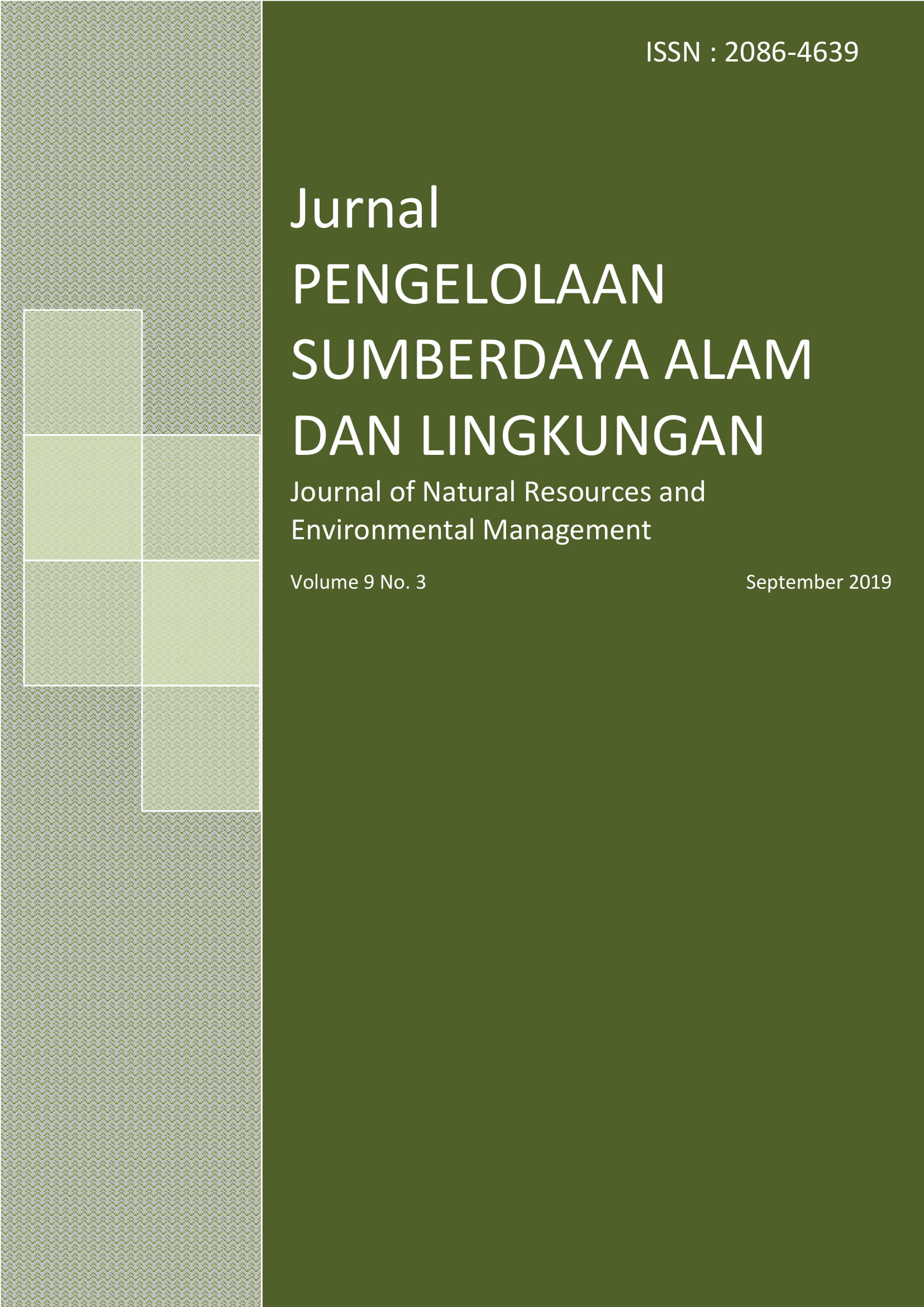Dapatkah Pembayaran Jasa Lingkungan Mencegah Deforestasi dan Meningkatkan Kesejahteraan Masyarakat? Pelajaran dari Hutan Desa Laman Satong, Kabupaten Ketapang, Kalimantan Barat
Abstract
References
[BPS] Badan Pusat Statistik Kabupaten Ketapang. 2014. Kecamatan Matan Hilir Utara dalam angka 2014. Ketapang : BPS.
[BSN] Badan Standardisasi Nasional. 2010. SNI 7645:2010 tentang Klasifikasi penutup lahan. Badan Standardisasi Nasional. Jakarta : Badan Standardisasi Nasional.
[FFI] Fauna & Flora International. 2012. Plan Vivo Project Idea Note (PIN): Community Forest Ecosystem Services, Indonesia. Jakarta : Fauna & Flora International.
[FFI] Fauna & Flora International. 2015. Plan Vivo annual report 2015: Laman Satong Village Forest Carbon Project. Jakarta : Fauna & Flora International
Afiff S, Purwanto SA, Utami S, Haryono, Nugroho AC, Rokhdian AD. 2011. Kajian sosial dan kelembagaan terkait dengan pengelolaan hutan dalam Skema REDD di Kabupaten Ketapang, Provinsi Kalimantan Barat. Jakarta : Pusat Kajian Antropologi, FISIP, Universitas Indonesia.
Bond I, Grieg-Gran M, Wertz-Kanounnikoff S, Hazlewood P, Wunder S, Angelson A. 2009. Incentives to sustain forest ecosystem services: a review and lessons for REDD. London (UK), Bogor. Washington : International Institute for Environment and Development, London, UK with CIFOR, Bogor, Indonesia, and World Resources Institute, Washington D.C., USA.
Departemen Kehutanan dan Badan Pusat Statistik. 2007. Identifikasi Desa dalam Kawasan Hutan. 2007. Jakarta : Departemen Kehutanan dan Badan Pusat Statistik.
Hutabarat J, Rachmansah A. 2013. Community forest ecosystem service V.1.3. (intervention: avoided deforestation and forest conservation on mineral soil). Plan Vivo Technical Specification. Jakarta : Fauna & Flora International.
Kaczan D, Swallow M, Adamowicz V. 2013. Designing a payments for ecosystem services (PES) program to reduce deforestation in Tanzania: An assessment of payment approaches. Ecol Econ. 95: 20-30.
Lapeyrea R, Pirardb R, Leimona B. 2015. Payments for environmental services in Indonesia: What if economic signals were lost in translation? Land Use Policy. 46: 283-291.
Leimona B, Joshi L. 2009. Can rewards for environmental services benefit the poor? Lessons from Asia. Int J Commons. 3: 82-107.
Pemerintah Indonesia. 2009. Undang-Undang No. 32 tahun 2009 tentang Perlindungan dan Pengelolaan Lingkungan Hidup. Jakarta: Sekretariat Negara.
Pemerintah Indonesia. 2014. Peraturan Menteri Kehutanan Republik Indonesia Nomor: P.89/Menhut-II/2014 Tentang Hutan Desa. Jakarta: Kementerian Kehutanan.
Rositah E. 2006. Governance Brief: Kemiskinan Masyarakat Desa sekitar Hutan dan Penanggulangannya. Bogor : CIFOR.
Tacconi L, Mahanty S, Suich H. 2013. The Livelihood Impacts of Payments for Environmental Services and Implications for REDD+. Soc Natur Resour. 26 (6): 733-744.
Tacconi L. 2012. Redefining Payments for Environmental Services. Ecol Econ. 73: 29-36.
Torpey-Saboe N, Andersson K, Mwangi E, Persha L, Salk CW. 2015. Benefit Sharing Among Local Resource Users: The Role of Property Rights. World Dev. 72: 408-418.
Wunder S. 2009. Can payments for environmental services reduce deforestation and forest degradation? Di dalam A. w.-K. Angelsen. 2009. Realising REDD+: National strategy and policy options (hlm 213-224). Bogor : CIFOR.
Yayasan Resource Development Center. 2009. Peluang Pemanfaatan Potensi Karbon Hutan Dalam Isu Perubahan Iklim. Jakarta: Forest Governance and Multistakeholder Forestry Programme (MFP) II.
Authors
Authors who publish with this journal agree to the following terms:
- Authors retain copyright and grant the journal right of first publication with the work simultaneously licensed under a Creative Commons Attribution License that allows others to share the work with an acknowledgement of the work's authorship and initial publication in this journal.
- Authors are able to enter into separate, additional contractual arrangements for the non-exclusive distribution of the journal's published version of the work (e.g., post it to an institutional repository or publish it in a book), with an acknowledgement of its initial publication in this journal.
- Authors are permitted and encouraged to post their work online (e.g., in institutional repositories or on their website) prior to and during the submission process, as it can lead to productive exchanges, as well as earlier and greater citation of published work (See The Effect of Open Access).






